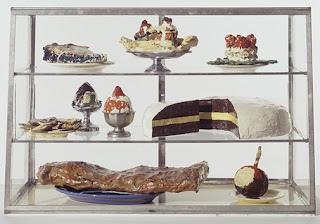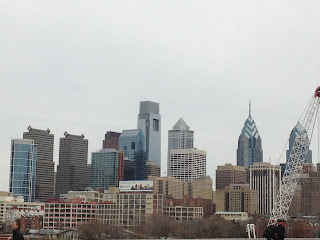Go and see the Claes Oldenburg exhibition "The Street and The Store" at the MOMA in NYC . It's remarkable. I had always been familiar with Claes Oldenburg's monumental sculpture of every day objects, but I knew nothing of his folky, smaller and more intimate early work. I was struck at how primitive his "The Street" series of cardboard sculptures were in comparison to his machine made mega-works. He was obviously influenced by the raw expression of outsider art and Jean Dubuffet. But the sculptures of his that really turned me on were his plaster soaked muslin over wire pieces from his "The Store" series. I fell in love with his "Men's Jacket with Suit and Tie", "Green Lady Shoes", "U.S.A. Flag", "Blue Pants Over Chair", and "White Gym Shoes". They're modest objects made into semi-abstract, chunky, durable, forms. Furthermore, these particular works aren't too silly, like his sundae or hamburger sculptures are... I find those works to be more on the Pop Art spectrum (which I am not naturally drawn to) than the Folk Art spectrum.
According to MOMA (http://www.moma.org/interactives/exhibitions/2013/oldenburg)...
"Claes Oldenburg’s audacious, witty, and profound depictions of everyday objects have earned him a reputation as one of the most important artists of the 20th century. This exhibition examines the beginnings of Oldenburg’s extraordinary career with an in-depth look at his first two major bodies of work: The Street (1960) and The Store (1961–64). During this intensely productive period Oldenburg redefined the relationship between painting and sculpture and between subject and form. The Street comprises objects made from cardboard, burlap, and newspaper that together create an immersive panorama of a gritty and bustling city. The Store features brightly painted sculptures and sculptural reliefs shaped to evoke commercial products and comestibles. In The Store, cigarettes, lingerie, and hamburgers all become viable subjects for art."







































